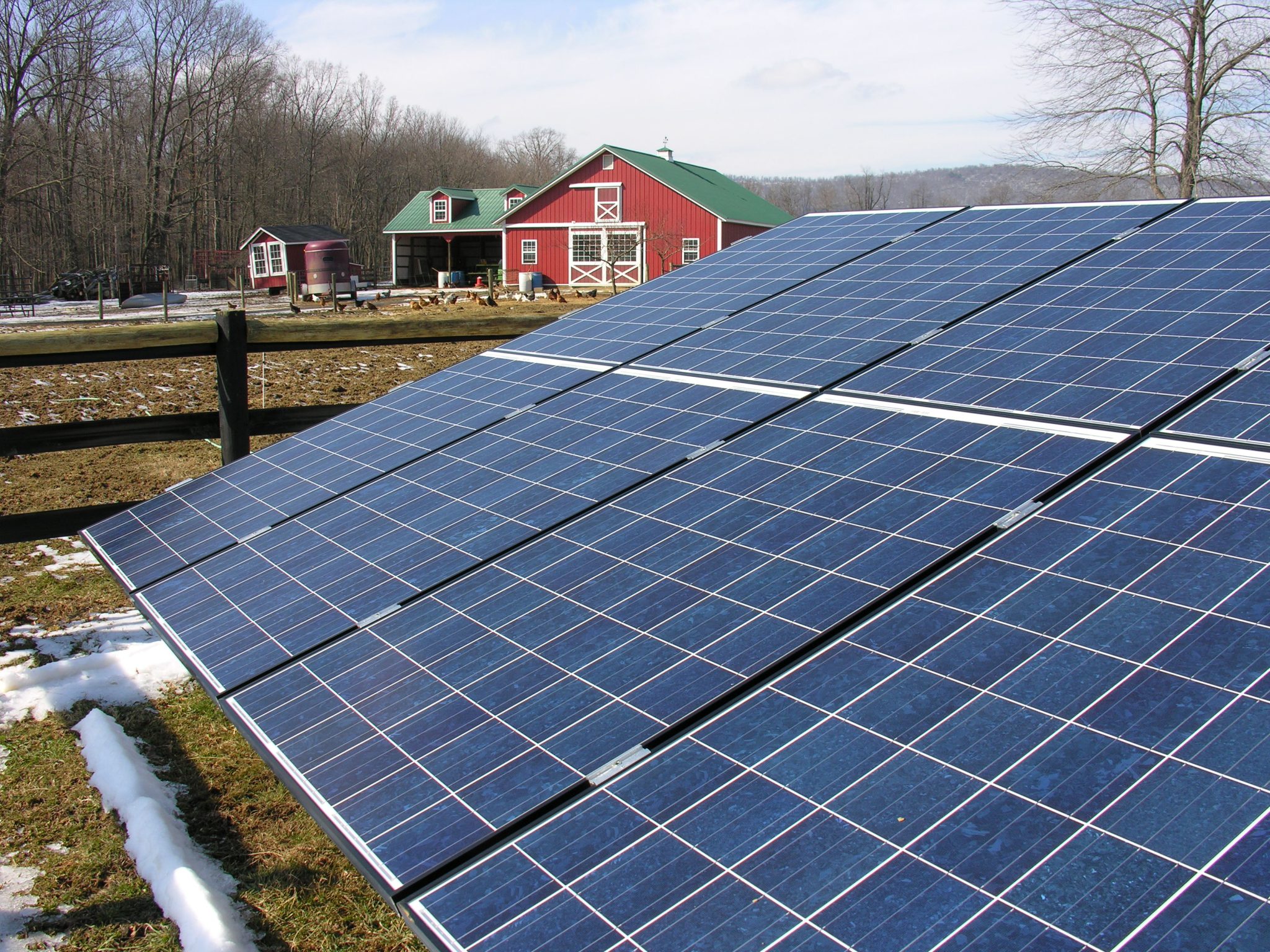As we prepare for another year of cultivating relationships with local farms and vineyards to install solar in Virginia through the USDA REAP Grant, we take a moment to reflect on why renewable energy makes so much sense for farmers. The business of agriculture offers a perfect showcase of how, and why, energy efficiency and renewables are part of a larger strategy that integrates new technologies with time proven methods to make an operation sustainable and more profitable. Solar provides one answer to the question: how to lower farm and vineyard opearting costs?
Businesses need to be willing to invest in long-term systems that will improve their operation year after year. Imagine if you rented your house for the next 30 years? You essentially would be making payments for the homeowner, who gets to hold all the equity. Unfortunately the energy use of the United States, much like the way our land has been farmed, has not reflected this long-term thinking. Sure there are a lot of reasons (some might say excuses) to explain why certain methods have been used, but it’s the dawn of a new day both for energy and farming.
Solar_Farm
Farming methods have been developed over the past 50-60 years using heavy machinery, huge plots of land, and tons of fertilizer to artificially build the soil. This has enabled us to feed the exponentially growing population, but is there a better, more sustainable way? While we’re not here to debate how to feed a rapidly growing population, we do want to point out the exciting new methods being used.
A recent visit to Timber Creek Organics in Charlottesville is case in point. The owner, Zach Miller, is a very intelligent and practical individual who is passionate about sustainable farming methods. While walking Zach’s farm we looked for areas to site solar arrays, and I was fortunate to learn a great deal about his sustainable farming system. A lot of what is done at TCO serves multiple purposes. For example, the pigs and chickens graze in a way modeled after Joel Salatain’s techniques for rotational grazing. By having the pigs root up a certain plot of the field or woods he is able to prepare the ground (without wasting expensive diesel fuel) to plant an annual grass that his cows will eventually thoroughly enjoy. As Zach put it “we are constantly looking for ways to save; sure it’s nice to think about how to profit, but a lot of times you first need to look at where you can cut costs.” This may seem like common sense, and a lot of it is, but unfortunately these methods, like solar energy are not as widely adopted as they could be.
The good news is that these advances are gaining popularity. There have been several leaders over the past 20 years that have inspired farmers to become more self reliant, sustainable and profitable. A few I would encourage looking into are Sepp Holzer, Bill Mollison, and a good ol’ Virginian mentioned above; Joel Salatian. You can check out amazing, yet simple, techniques used by these farmers that set up systems that improve themselves year after year and continue to get better. One thing you will find is that each and every one of the farmers in this movement have found the positive benefits that renewable energy offers.
Keep in mind too, that solar energy helps protect the land and environment that sustains farm and winery operations. There is also ample space on farms and vineyards to locate (typically through ground mounting) the solar arrays.This is even better if there is unused farm area that can now be used to harvest sunlight.
It’s as simple as becoming more independent, sustainable, and lower farm or vineyard’s operating costs-our solar energy systems do just that.
As another inspirational farmer Mark Shepard puts it, “as farmers we are really just photosynthesis managers.” At Prospect Solar we feel the same way…let us help you capture more of that sunlight and turn it into extra cash.
Do you have a farm, vineyard, or other rural business that would like to save 25% off the cost of solar energy through the USDA REAP Grant? See if you qualify below.
